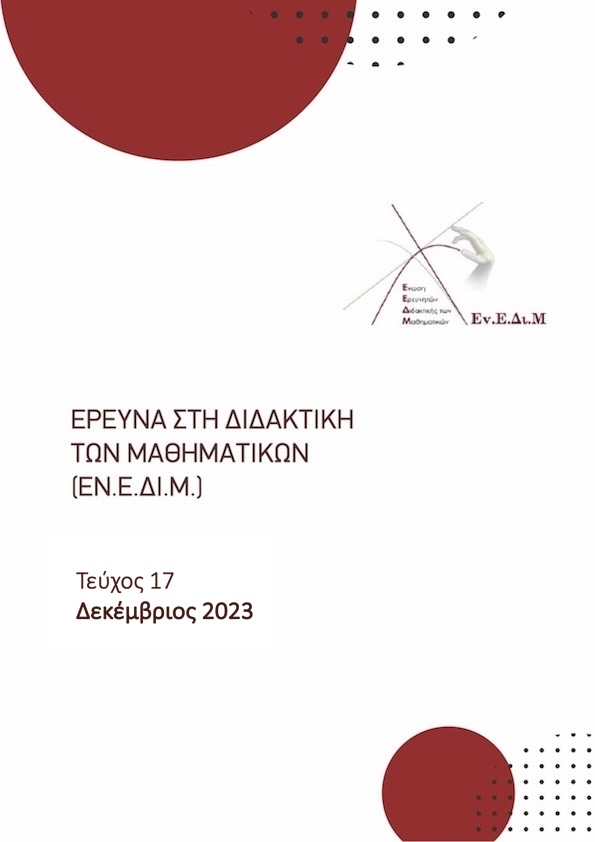Τα διαγράμματα στην επίλυση προβλημάτων: δυσκολίες στη δημιουργία και στη χρήση τους από μαθητές της Δ’ Δημοτικού

Περίληψη
Η παρούσα έρευνα εξετάζει τις δυσκολίες με τις οποίες οι μαθητές έρχονται αντιμέτωποι, όταν χρησιμοποιούν ή δημιουργούν διαγράμματα για να επιλύσουν λεκτικά προβλήματα αθροιστικής δομής μίας πράξης πριν και μετά από μια διδακτική παρέμβαση για τη χρήση διαγραμμάτων. Για τη διερεύνηση των δυσκολιών δόθηκαν δύο τεστ (αρχικό και τελικό) σε 45 μαθητές της Δ’ δημοτικού, οι οποίοι κλήθηκαν να επιλύσουν τρία προβλήματα με την παρότρυνση να σχεδιάσουν διαγράμματα και να τα χρησιμοποιήσουν. Οι δυσκολίες ταξινομήθηκαν σε τρεις κατηγορίες αναφορικά με την κατανόηση της έννοιας, τη δημιουργία και τη χρήση ενός διαγράμματος. Τα αποτελέσματα έδειξαν ότι αρχικά όλοι οι μαθητές δυσκολεύονται να κατανόησουν την έννοια του διαγράμματος κι αντίστοιχα να το χρησιμοποιήσουν. Μετά τη διδακτική παρέμβαση οι δυσκολίες των μαθητών περιορίστηκαν και αφορούσαν κυρίως τη δημιουργία ενός διαγράμματος ως προς τη συμπλήρωση των δεδομένων-ζητούμενου στη σωστή θέση ή τη χρήση του κυρίως σε προβλήματα Σύγκρισης και Αλλαγής.
Λεπτομέρειες άρθρου
- Πώς να δημιουργήσετε Αναφορές
-
Μπακαλίδου Ά., & Τζεκάκη Μ. (2023). Τα διαγράμματα στην επίλυση προβλημάτων: δυσκολίες στη δημιουργία και στη χρήση τους από μαθητές της Δ’ Δημοτικού. Έρευνα στη Διδακτική των Μαθηματικών, (17). ανακτήθηκε από https://ejournals.epublishing.ekt.gr/index.php/enedim/article/view/32356
- Ενότητα
- Άρθρα

Αυτή η εργασία είναι αδειοδοτημένη υπό το CC Αναφορά Δημιουργού 4.0.
Οι συγγραφείς των άρθρων που δημοσιεύονται στο περιοδικό διατηρούν τα δικαιώματα πνευματικής ιδιοκτησίας επί των άρθρων τους, δίνοντας στο περιοδικό το δικαίωμα της πρώτης δημοσίευσης. Άρθρα που δημοσιεύονται στο περιοδικό διατίθενται με άδεια Creative Commons BY και σύμφωνα με την άδεια μπορούν να χρησιμοποιούνται ελεύθερα, με αναφορά στο/στη συγγραφέα και στην πρώτη δημοσίευση.


